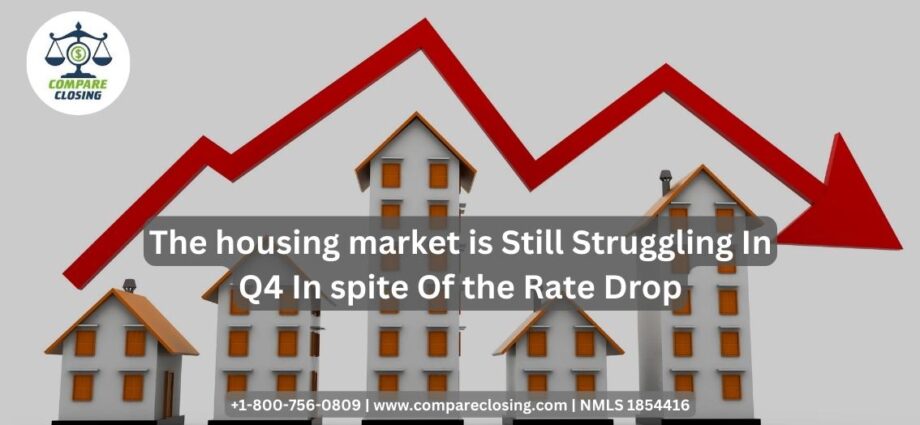Warning: Undefined variable $custom_content in /home4/comcompare/public_html/mortgagenews/wp-content/plugins/code-snippets/php/snippet-ops.php(582) : eval()'d code on line 10
Latest posts by Amanda Byford (see all)

The housing slump began in earnest in October. Existing home sales fell 5.9% from September to a seasonally adjusted annual rate of 4.43 million units in October, down 28.4% from a year ago. This is the largest annual decline in existing home sales since 2007.
According to National Association of Realtors Chief Economist Lawrence Yun, homebuyers lost mortgage eligibility in October as mortgage rates rose.
The effect is greater in more expensive regions and markets in countries where house prices have risen significantly in recent years.
Both declining demand and limited supply remain serious issues for the housing market. At the end of October, the total housing stock was 1.22 million units, down 0.8% from September and a year ago (1.23 million units).
There are 3.3 months of unsold inventory at the current sales rate, compared to 3.1 months in September and 2.4 months in October 2021. Yun also said inventory levels are still tight and some homes for sale are still receiving multiple offers.
In October, 24% of homes sold above the asking price. Conversely, homes that have been on the market for more than 120 days have an average depreciation of 15.8%.
The median used home price for all home types was $379,100 in October, up 6.6% from October 2021. Houses were on average October 21, September 19, 2021, and October 18. NAR data shows that about two-thirds of homes sold in the past month were on the market for less than a month.
The number of first-time home buyers is falling. In October, it was just 28%, an all-time low.
According to the Realtor.com Market Trends report for October, the largest average price increases over the year were seen in Milwaukee (+34.5%), Miami (+25.1%), and Kansas City (+21.4%) ).
Phoenix, the iBuyer capital of the world, reported the largest year-over-year increase in affordable housing occupancy (+35.9 percentage points), followed by Austin (+31.2 percentage points) and Las Vegas (+24.4 percentage points)
As for the near future, don’t expect good times to return. Lisa Sturtevant, a chief economist at Bright MLS, said fourth-quarter sales in the U.S. remained weak.
Full-year sales are down more than 15 percent from a year ago and will fall below 5 million units for the first time in a decade.
Mortgage rates have fallen sharply recently on the back of positive inflation data, but the lower rates weren’t enough to prevent the housing market from collapsing.
Sturtevant also suggested that many potential buyers are taking a wait-and-see approach to see if rates drop further. However, another major market constraint is the lack of inventory. As we enter the winter holiday season, new products are selling out.
Nicole Basho, a chief economist at Zillow, said the recent declines in mortgage rates could provide some reprieve for the coming months, but with home prices still strong, affordability issues remain high on the agenda.
Reference Source: Housing Wire
© All Right Reserved. 2022 | Compare Closing LLC | NMLS 1854416